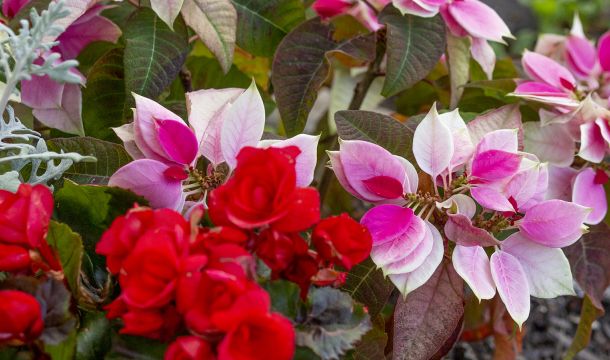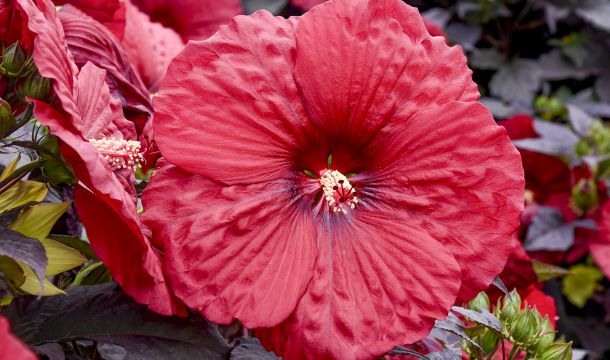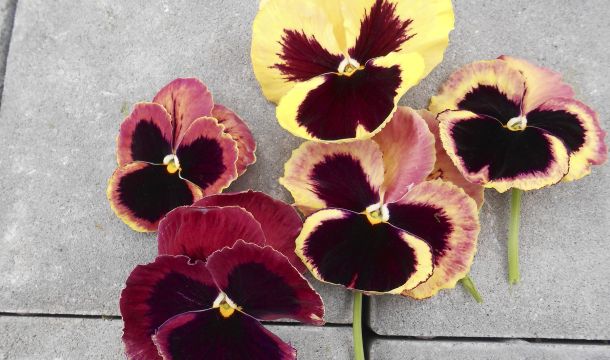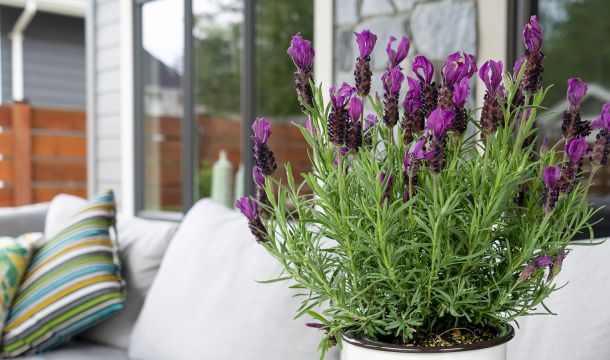Making Coin with Monarda
Revenues have grown over the past decade, bumping Monarda from a C-tier specialty to a B-tier product capable of chugging significant sales year over year. Past sins had included aggressive spreading, intimidating height, and powdery mildew but modern breeding has cleaned out these issues. Blessings include a pretty and distinctive flower, with native and pollinator awareness growing among the gardening public.
Some garden centers have gone hard into Monarda as an important summer sell, offering eight to twelve cultivars. Nearly everyone agrees that sales are much better than they were a decade ago. Places that turn over 10% of their perennial bench place a confident bet that those Monardas will sell.
Lo and behold, the customers come in as thick as the bees, butterflies, and hummingbirds that hover around the crowns! Shorter heights, more colors, and stronger disease resistance has strengthened Monarda’s appeal, along with deer and rabbit resistance.
Jacob Cline defines "old-school Monarda" for many people. It towers over summer phloxes and rudbeckias, blooming about the same time. Part of the first wave of breeding, it is still a tentpole in many programs.
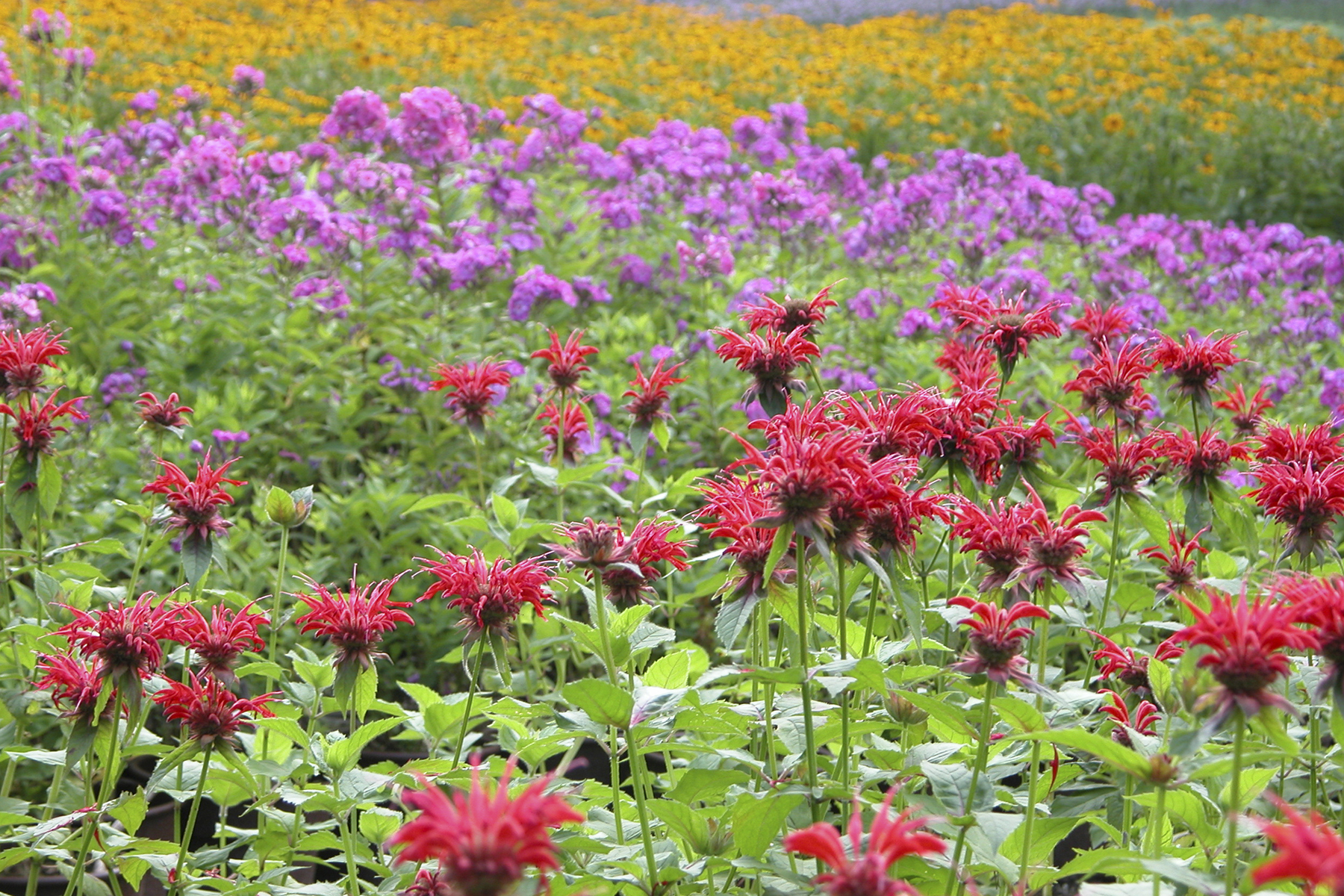
Monarda Jacob Cline
The Monarda Quirks
New breeding hasn’t saved the day everywhere in North America. Great Plains states get great results from their wide open spaces and steady supply of wind. By contrast, mid-Atlantic states suffer from highly humid summers, so growers and retailers seek breeding strong enough to push back. The key is to avoid locking Monarda into pocket gardens with low air circulation, hemmed in by hedges and buildings.
Here is where we run into Monarda’s big quirk: better disease resistance cuts down flower production, since both require energy from the plant. Breeders settle this teeter-totter problem by pushing back powdery mildew until after the floral display dies out for the season. Bear in mind that powdery mildew is not a crisis in the Monarda world. It makes the plant look tatty, scorching the retail value but not causing any real harm.
Enough of the beast remains within for some rascally behavior, however. Monarda belongs to the mint family and the older ones spread like mint if left unguarded. Modern breeding brought the hammer down on the spreading issue and there is a stark difference. A 1-gallon pot of Jacob Cline forms a 3 by 3 foot patch after two or three years, rising 4 feet high. Leading Lady, by contrast, fills that space after seven to eight years with flowers a little over a foot off the soil.
The Bee-You series was developed in Europe's wetter summers, so the disease resistance is strong in this series. The white Bee-Bright shows the typical habit found in a blended Monarda these days. Flowers open from the top, as shown with the pink 'Bee-Lieve', opening in sequence until a cone is exposed (as shown with Bee-Merry) with a ring of petals surrounding it.
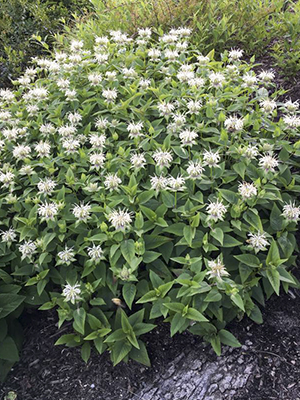 |
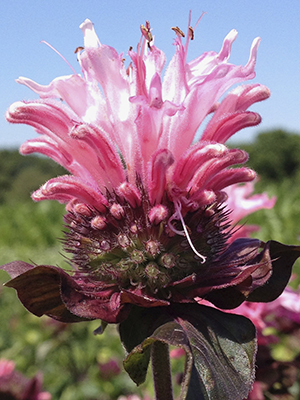 |
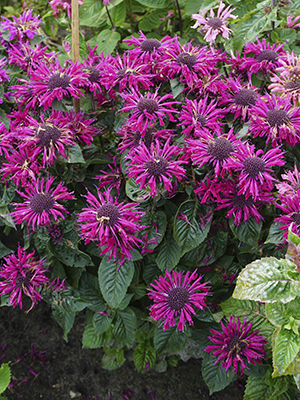 |
| Bee-You Bee-Bright | Bee-You Bee-Lieve | Bee-You Bee-Merry |
Sorting Out the Series
Monardas have gone through the three waves of breeding. First wave material cleaned up the wild stuff for commercial production so it has market power today.
- Jacob Cline is a didyma species, big and tall, red and aggressive. It represents the “old school” style of Monarda in many people’s minds.
- Gardenview Scarlet is similar but about a foot smaller with a slightly milder habit.
- Claire Grace is the best fistulosa variety, a species popularly used for southern plantings. Its yellow flowers sit on a shorter, calmer attitude.
- Grand Marshall was bred by the Canadian government for northern gardens. It grows about half the height of Jacob Cline and has a nice clumping habit to its patch.
Midnight Oil is a new introduction to the industry, coming out of the bradburiana species. It features bronze foliage in addition to a light lavender cap spotted with white.
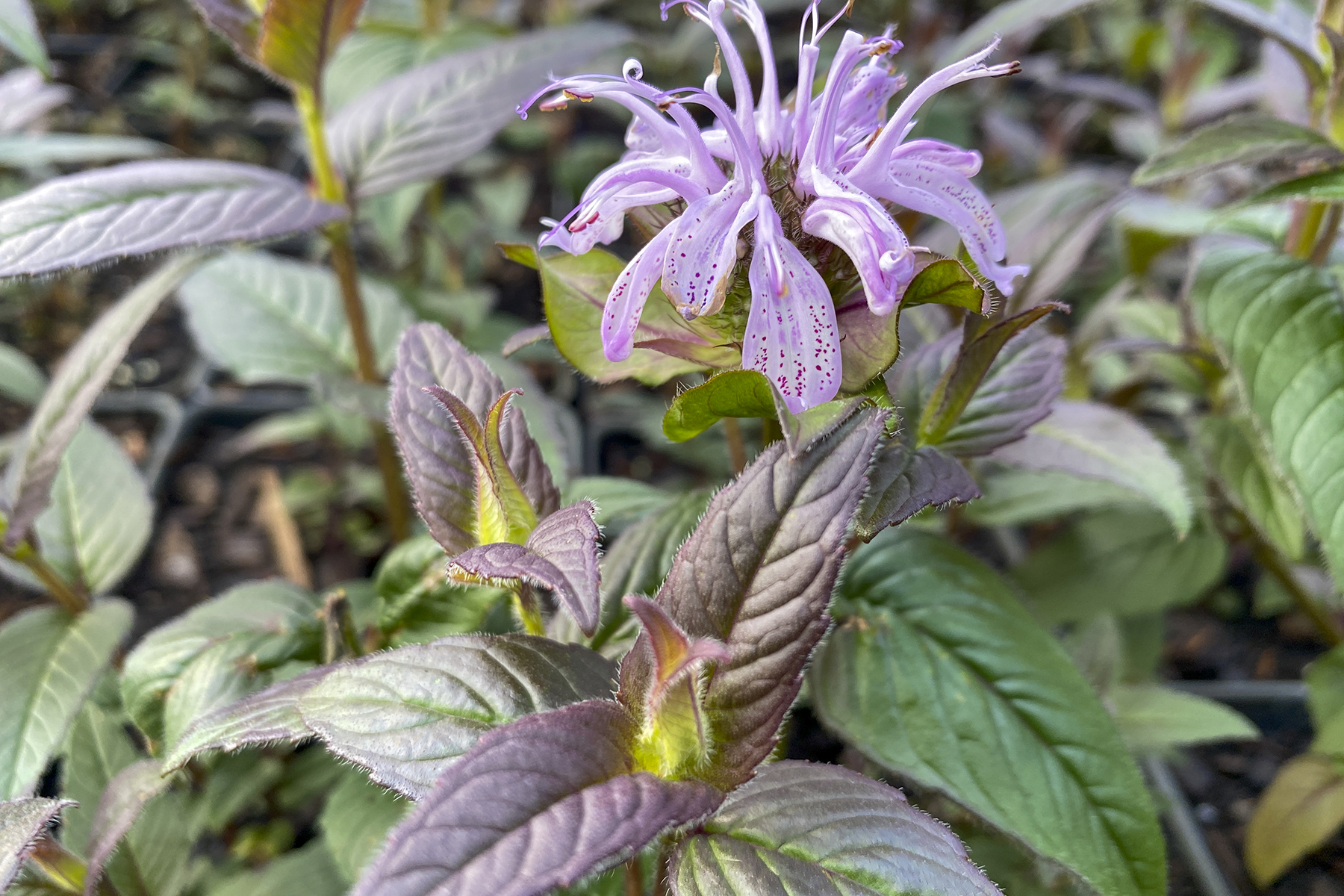
Monarda Midnight Oil
Often, plunking a species or first wave cultivar out-of-context in a typical garden results in a lanky, awkward display. For balance add warm-season grasses, the big ones that co-evolved with Monarda. Wild Monardas are tall because they lift their flowers over the plumes of these grasses. Their roots fight for space with the grasses–and win! These plants look good entangled in a mini-ecosystem of their own because they belong together.
Second wave breeding moved beyond Jacob and Claire and Marshall to see what blended Monardas could do with colors and sizes.
- Sugar BUZZ is the American effort to explore the range of colors in a mid-sized height. Flowers are about 2 inches plus. The series is a big one with seven choices.
- A European effort of the same vintage, the Bee-You series pulls closer toward disease resistance. Many locations in Europe have humid summers so the plant looks stouter and thicker. This series also has seven color choices. In places where powdery mildew is still a problem, try these.
- Leading Lady is a miniature Monarda series with earlier summer flowers, forming a smaller clump barely a foot tall. Razzberry is the standout color. Balmy is the competing miniature series.
- Electric Neon is sold on the strength of its big 3-inch flowers hoisted on a mid-sized plant. The colors are extra vibrant due to the different species inside the blend.
- BeeMine is part of Darwin’s first-year flowering program. Extra care was taken toward the calibre of the first year in bloom, so this series isn’t as vulnerable to vernalization issues.
Blended Monarda series were developed to fill specific roles in the garden. Leading Ladies are the shortest ones, barely getting over one foot. It uses Heucheras as companion plants. The Electric Neon series sold for its extra big, extra vibrant blooms. The Sugar BUZZ series is a mid-height Monarda, about 2-1/2 feet, with a big range of seven colors.
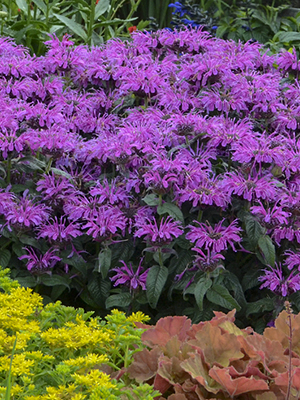 |
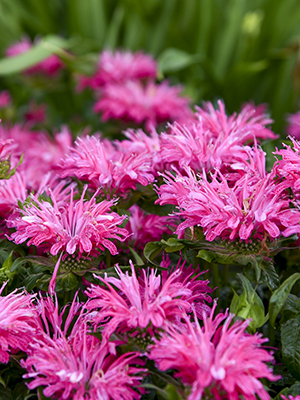 |
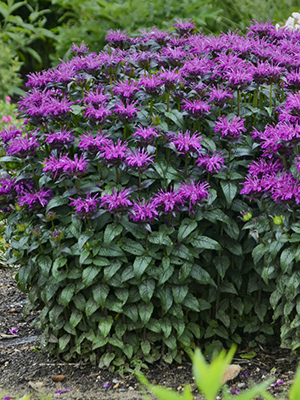 |
| Leading Lady Plum | Electric Neon Pink | Sugar BUZZ Rocking Raspberry |
In the third wave there was a rethinking of the category with breeders adopting a whole-plant approach. Build a better floral display by building a better plant. The Upscale series is a good example.
- Introduced two years ago, the Upscale series believes a Monarda should have heft. These plants reach 3 feet.
- Flowers moved forward with the hue of Red Velvet always mentioned.
- Disease resistance pushed back powdery mildew without losing floral displays.
Another re-thinking of Monarda is a bronze-leafed bradburiana called Midnight Oil. A white cap on the crown is laced with lavender and lightly freckled with dots. Like the others in its species, Midnight Oil blooms earlier and spreads much more slowly.
The Upscale series comes out of third wave breeding. This style focuses on the calibre of the whole plant and how the various parts feed into a better floral display and garden performance. It returns heft to the Monarda chassis, growing out to about three feet, but it still builds its patch slowly for better garden manners.
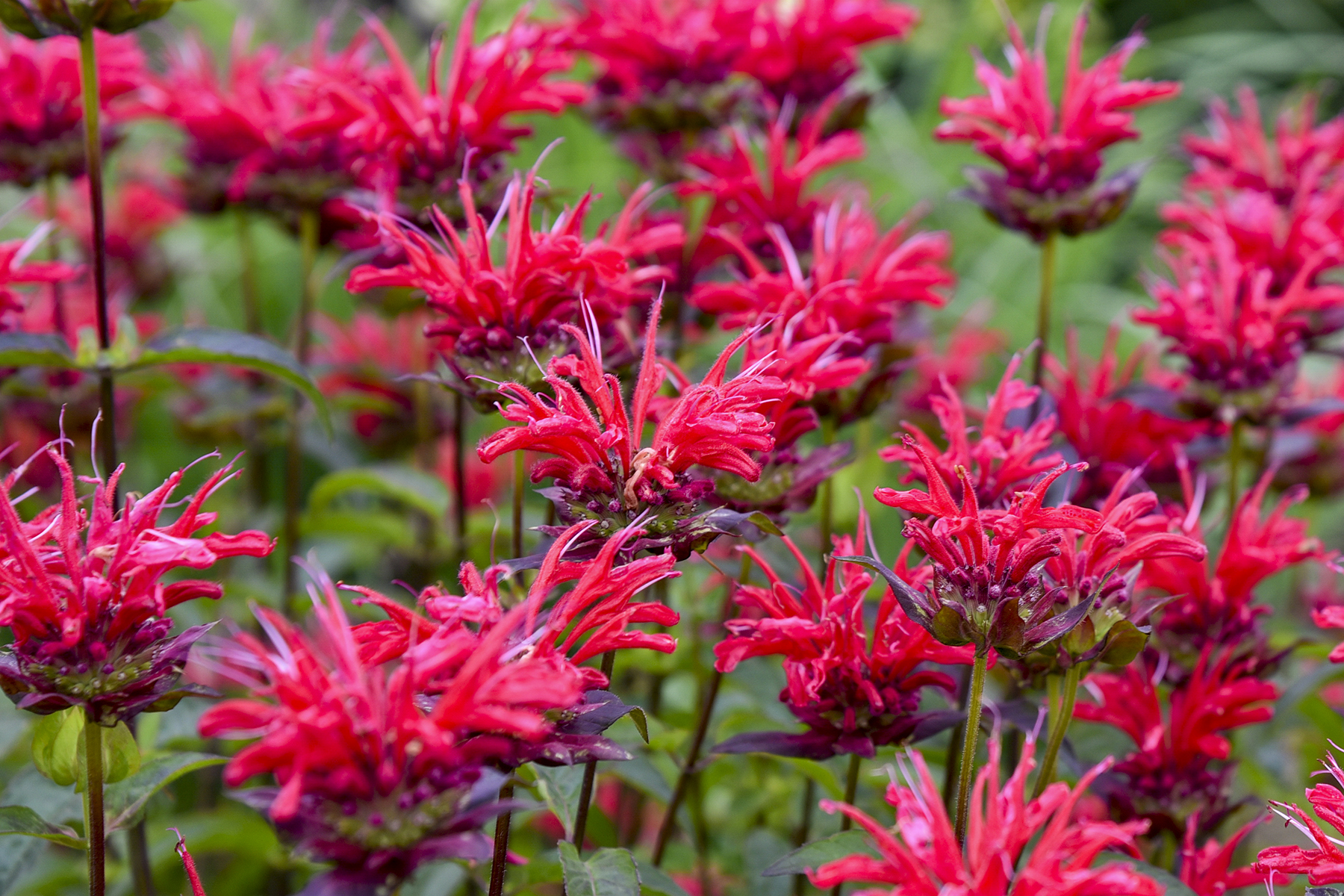
Monarda Upscale Red Velvet
Popular Articles
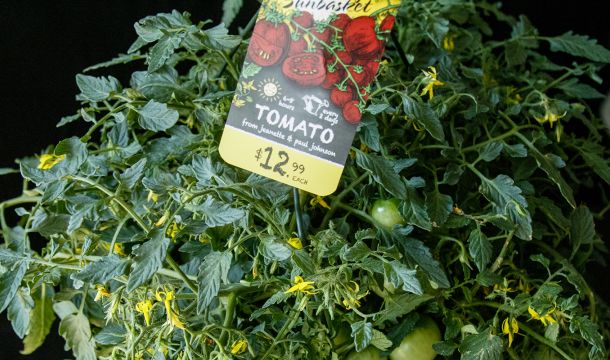
Trialing Edible Baskets

The Arthouse Expansion of Agastaches

The Strengths Behind Phlox Subulata
